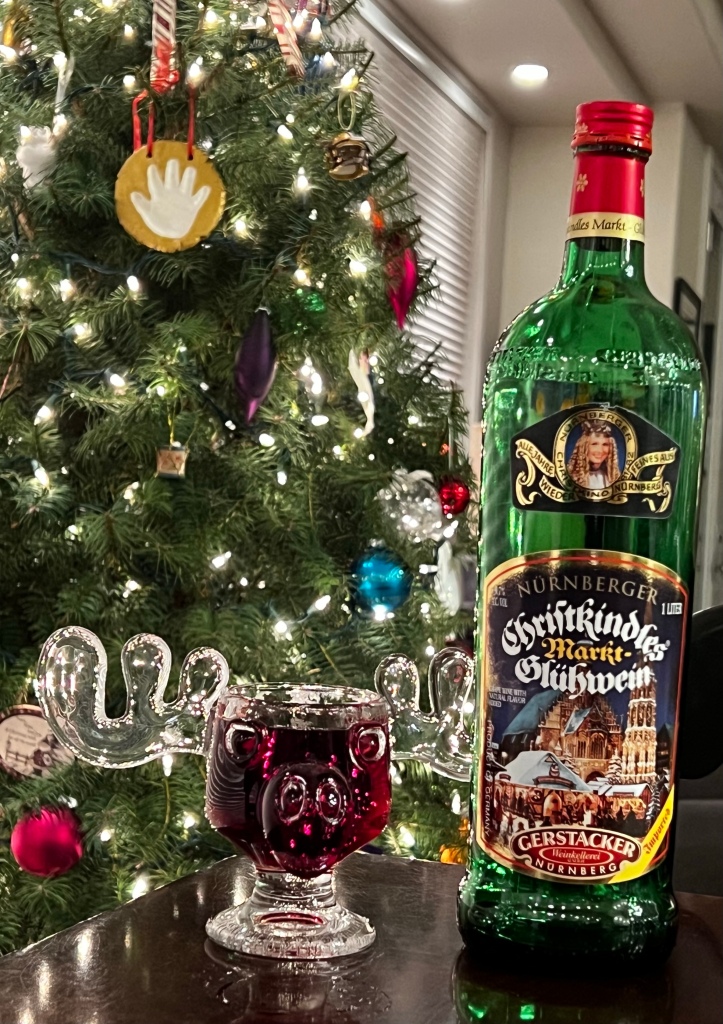
With the holidays upon us, this week I wanted to try a wine a little different from my usual theme. Glühwein, or ‘glow wine’ as it is loosely translated, is a spiced wine traditionally sold at German and Austrian Christmas markets. Its history dates back to Roman times when they needed ways to mask the flavors of wine as it went bad. The Romans would add honey and spices to their wine then bring it to a boil to reduce it down. Glühwein was commonly heated with hot ‘glowing’ irons, which is where its moniker originated. The oldest recorded history of what we know as Glühwein, dates back to a 1429 tankard owned by Count John IV of Katzenelnbogen, a German nobleman. Glühwein can be made from white, red or fruit wines (such as blueberry) and is traditionally seasoned with cinnamon sticks, aniseeds, vanilla, and sugar. Most European countries have their own versions of mulled wine, some replace oranges with lemons or apples, or change the spice blends. One commonality is that the base wine is not of the highest quality, or can be a great way to use up a few open bottles after a party. Serving Glühwein ‘mit Schuss’ (with a shot) of rum or amaretto is also an option!

While I could easily make my own, I opted to purchase a bottle of Gerstacker Nürnberger Christkindles Markt Glühwein at my local German deli, along with some imported Lebkuchen (gingerbread cookies). Unlike other wines, it isn’t known for its delicate notes. Depending on the grapes used, the color might be lighter or darker. My glass was a pale bright ruby color with watery legs. On the nose, I detected orange peel, cinnamon, clove, ground nutmeg, and vanilla bean. The label did note it was grape wine with natural flavor added, so many of these are a result of these additions although it is difficult to know which because ingredients are not listed. Also, despite my thorough searching, I was unable to determine which grape varieties were used in the production of this product. The palate lacked complexity, as to be expected considering it is consumed warm after a cold day outside or during an outdoor festival, and can be chased with shots of liquor. This wine definitely serves its purpose and is quite festive. Out of obligation and in the interest of being thorough, I also sampled it with shots of amaretto and rum (the things I do for research!). I enjoyed the wine most by itself but with rum was my second favorite. The amaretto mix was also good, but provided the option, I would select rum. If you are searching for a lightly boozy beverage for observing holiday lights or to serve to guests, this is a great option that won’t break the bank! Happy holidays!
-TheLooseTannin